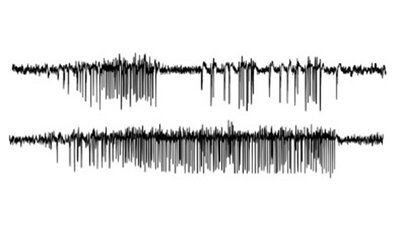
One of the first steps in creating treatments for a medical condition is to make an accurate model of it, in which to identify targets for investigation and test potential therapeutic candidates. Without such a model, a condition can be very difficult to study, let alone treat, because of the limitations in laboratory testing that can be done.
One disorder that has suffered from limited animal models is catamenial epilepsy, a type of epilepsy in which seizure frequency fluctuates with the menstrual cycle. This is experienced by an estimated 31-60% of women with epilepsy. Previous studies of this type of epilepsy have been done in animal models treated with systemic factors to imitate the hormone fluctuations of the menstrual cycle, but because these factors are not contained to the affected area of the brain, it is difficult to study the mechanism of catamenial epilepsy and identify therapeutic targets.
Recent research from Professor Catherine Christian-Hinman in the Department of Molecular and Integrative Physiology has identified an animal model capable of modeling some aspects of catamenial epilepsy without hormone treatments, creating exciting possibilities in the field for advancement in disease research and patient treatment. This research has been published in Experimental Neurology in the paper, “Seizure burden fluctuates with the female reproductive cycle in a mouse model of chronic temporal lobe epilepsy.”

Seizure activity recorded during this study, published in Experimental Neurology.
The research team, which included recent Neuroscience PhD graduate and lead author Jiang Li, discovered that mice in the intrahippocampal kainic acid (IHKA) model of epilepsy can show fluctuations of seizures with the estrous cycle. The mice were treated to develop epilepsy after a single kainic acid injection in the hippocampus. This model was already established in the epilepsy field. However, the new correlation was discovered when a novel machine learning program that Li developed revealed patterns in the seizure frequency data with the estrous cycle. This finding means that this mouse model of catamenial-like epilepsy can be created with a single non-systemic injection confined to the hippocampus, potentially providing more clinical relevance and elimination of gray areas present in prior models used in the field, according to Christian-Hinman.
Making this even more valuable is that the IHKA model of catamenial epilepsy shows similar heterogeneity to the human population with the condition. Some women with epilepsy have strong fluctuations in seizures with their menstrual cycle, and some show no change at all. The population of mice studied was the same way, with some showing increases or decreases in seizure frequency during certain points in their estrous cycle, and some showing minimal or no changes. Christian-Hinman and her team are excited that this heterogeneity the mouse model is capable of replicating can prove extremely useful when investigating why some women are so predisposed to a strong dependence of seizure activity on the menstrual cycle.
Christian-Hinman states that her team plans to investigate this mouse model more and potentially use it in future research. She also points out that this does not eliminate other models in the field, but instead adds to the toolbox for investigators.
“The more models we have available in the field, the better, because it allows us to compare between them,” she stated during an interview. “This is one of the few models where we have seen fluctuations in seizures with the [estrous] cycle without giving any other exogenous treatments. Comparing this model with different models that exist in the field will hopefully provide some novel ideas and targets for therapies.” The team is hopeful that this new scientific advancement will translate to increased qualities of life for epilepsy patients in the near future.
